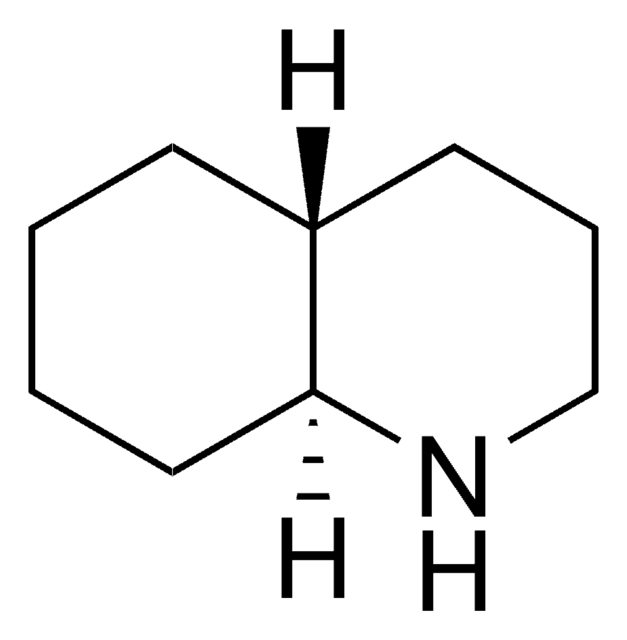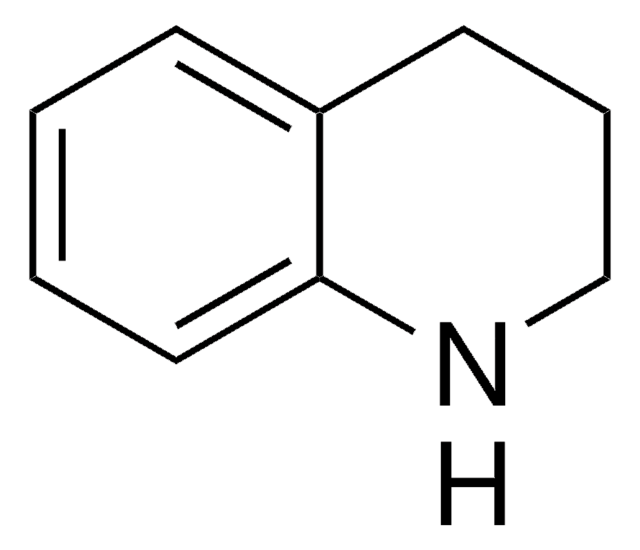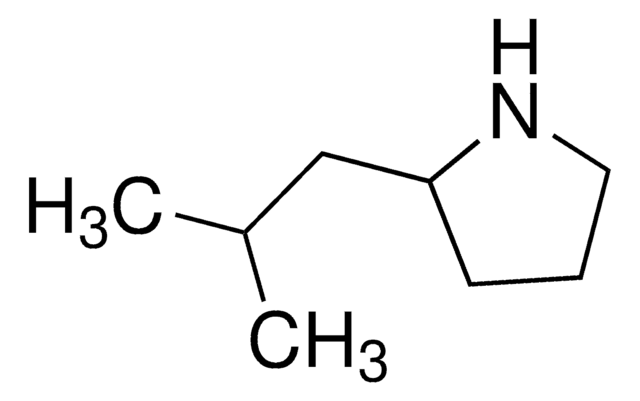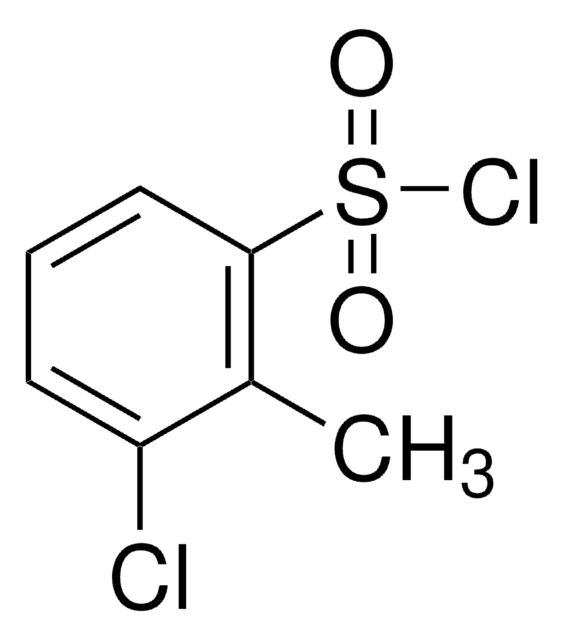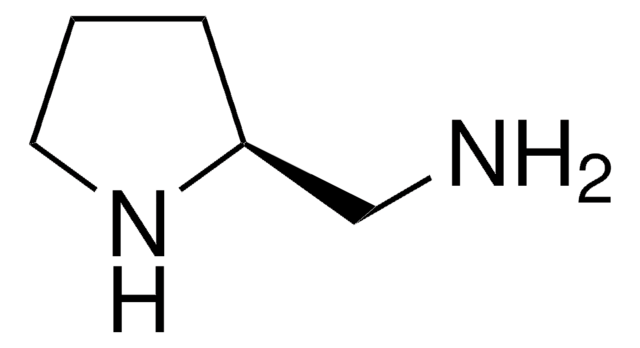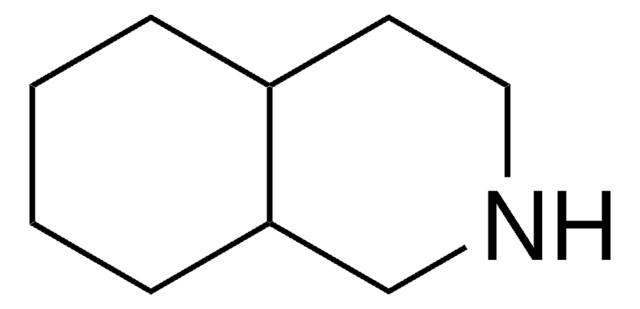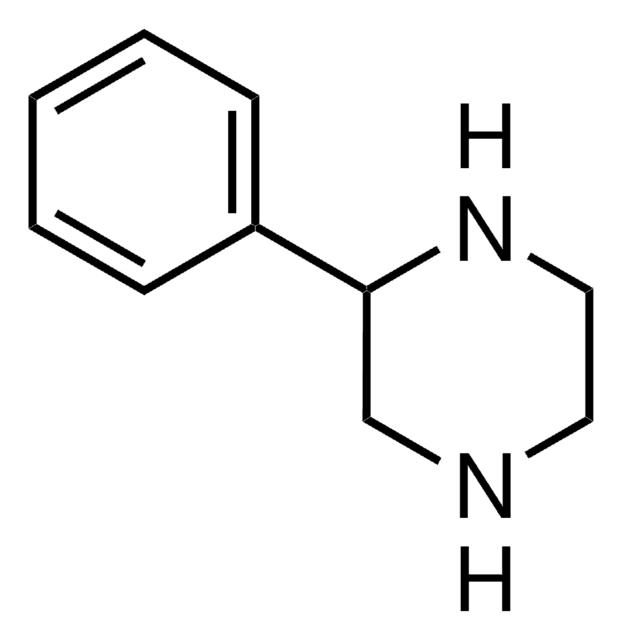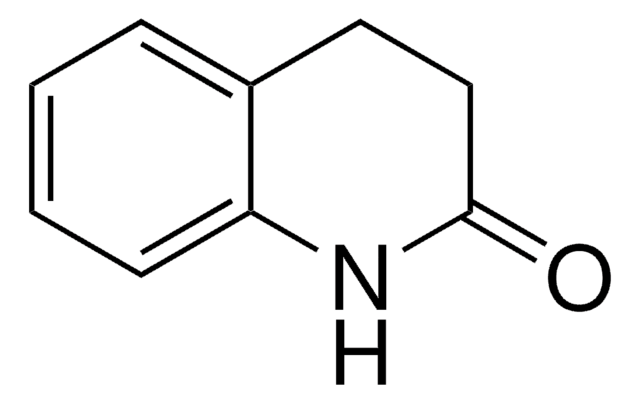125741
Decahydroquinoline, mixture of cis and trans
97%
Sign Into View Organizational & Contract Pricing
All Photos(1)
About This Item
Empirical Formula (Hill Notation):
C9H17N
CAS Number:
Molecular Weight:
139.24
EC Number:
MDL number:
UNSPSC Code:
12352100
PubChem Substance ID:
Recommended Products
Assay
97%
refractive index
n20/D 1.4916 (lit.)
density
0.933 g/mL at 25 °C (lit.)
SMILES string
C1CCC2NCCCC2C1
InChI
1S/C9H17N/c1-2-6-9-8(4-1)5-3-7-10-9/h8-10H,1-7H2
InChI key
POTIYWUALSJREP-UHFFFAOYSA-N
General description
Hydrodenitrogenation of decahydroquinoline has been investigated over Ni-MoS2/γ-Al2O3 and NiMo(P)/Al2O3 catalysts.
Signal Word
Warning
Hazard Statements
Precautionary Statements
Hazard Classifications
Acute Tox. 4 Oral - Eye Irrit. 2 - Skin Irrit. 2 - STOT SE 3
Target Organs
Respiratory system
Storage Class Code
10 - Combustible liquids
WGK
WGK 3
Flash Point(F)
154.4 °F - closed cup
Flash Point(C)
68 °C - closed cup
Personal Protective Equipment
dust mask type N95 (US), Eyeshields, Gloves
Regulatory Information
新产品
Choose from one of the most recent versions:
Already Own This Product?
Find documentation for the products that you have recently purchased in the Document Library.
Stephanie N Caty et al.
The Journal of experimental biology, 222(Pt 12) (2019-05-30)
Poison frogs sequester small molecule lipophilic alkaloids from their diet of leaf litter arthropods for use as chemical defenses against predation. Although the dietary acquisition of chemical defenses in poison frogs is well documented, the physiological mechanisms of alkaloid sequestration
The effect of phosphorus on the HDN reaction of piperidine, decahydroquinoline and ortho-propylaniline over Ni-MoS2/Al2O3 catalysts.
Jian M and Prins R.
Catalysis Letters, 35(3-4), 193-203 (1995)
Lauren A O'Connell et al.
The Journal of experimental biology, 224(Pt 3) (2021-01-08)
Poison frogs sequester chemical defenses from their diet of leaf litter arthropods for defense against predation. Little is known about the physiological adaptations that confer this unusual bioaccumulation ability. We conducted an alkaloid-feeding experiment with the Diablito poison frog (Oophaga
Ring opening of 1, 2, 3, 4-tetrahydroquinoline and decahydroquinoline on MoS2/γ-Al2O3 and Ni-MoS2/γ-Al2O3.
Gutierrez OY, et al.
J. Catal., 295, 155-168 (2012)
Savithra Jayaraj et al.
Scientific reports, 9(1), 11280-11280 (2019-08-04)
Visible-light mediated aerobic dehydrogenation of N-heterocyclic compounds is a reaction with enormous potential for application. Herein, we report the first complete aerobic dehydrogenation pathway to large-scale production of isoquinolines. The discovery of this visible light photoredox reaction was enabled through
Our team of scientists has experience in all areas of research including Life Science, Material Science, Chemical Synthesis, Chromatography, Analytical and many others.
Contact Technical Service